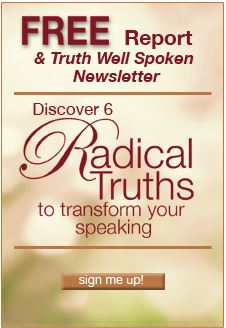The Alchemy of Change: Applying Obama’s “Secret” to Your Speaking
The Alchemy of Change: Understanding the Obama Phenomenon – and applying it to your speaking success
The Democratic National Convention in 2004 marked the historic speech that brought first-term senator Barack Obama of Illinois to national attention. Four years later his name and image are center stage and his capacity to touch people through speaking has led him all the way to the Oval Office. Obama understands something few speakers grasp: good information and delivery is not enough to be great. The capacity to inspire is where real change originates.
Obama’s presidential campaign inspired a previously silent majority to vote, signaling that “politics as usual” was in for a wild ride. The early Iowa primary heralded the beginning of young people and independents deciding it was time to have a voice in the governance of the United States. As we witnessed this man’s compelling message telling us that nothing can stand in the way of millions of voices calling for change, his words rang true: “There is nothing false about hope.”
There is a resonance in Obama’s speeches that mobilized many from a deep slumber about politics. As in any movement for change, the first step was to begin a new conversation, something that happened within the U.S. and across the world as the presidential drama unfolded. I say “drama” in full recognition of the cast of characters the U.S. presented, In the primaries, an African-American, a war hero, a former first lady, a former president, a fundamentalist Christian, a Southern gentleman (whose disappointing private life was yet to be revealed), and a billionaire played starring roles. Then a hockey mom sensationalized the mix. Even during the Writer’s Guild strike and boring television reruns last spring, each week of the primaries brought a new and suspenseful television episode viewed by millions. The debates and then the presidential election itself attracted record numbers of viewers.
As speakers, how can what we witnessed in the national dialogue be applied to our efforts to influence and inspire? We can begin by understanding the invisible dynamics present in any speaking situation and applying the power of resonance to build a powerful connection with our audiences.
My own awareness of the energetics of change began when I read David Hawkins’ Power Vs. Force: The Hidden Determinants of Human Behavior. Hawkins assigns a vibrational frequency to different states of being, a scale from 1 to 1000 that is exponentially more powerful as we move to higher states. For example, from 300-400, we operate from politics and ideology. From 400-500, science and reason reign supreme. At 500 we shift to a state of “unchanging love,” and at 540 we radiate joy. Hawkins’ suggests that the higher the state from which we operate – or speak – the higher the resonance. To get a sense of how this feels in your own body, take a stance of worry or judgment. Feel it fully. Then move into the feelings of hope and excitement. The higher resonance of hope and excitement in your energy field mobilizes and attracts. With the message “Yes We Can,” it is no wonder we saw a groundswell of support for Obama in the body politic.
Until I read Power Vs. Force, I had viewed myself as a “bridge,” a person who could link the understanding gained by engaging the right brained, intuitive work to which I was awakening to cross the great divide to those who believe only that “what you see is what you get.” I felt my business acumen gave me credibility to be heard, but in actuality I often found making the translation exhausting. When I decided to give up defining myself as a bridge, I found that speaking openly about what I know and believe boosted my capacity to be heard by those who were most ready to act on my message. And because I was energized in the process and didn’t block my natural expression and flow, my impact was greater and my work more fulfilling Unless we speak our truth, our allies won’t be able to recognize us.
For a physical analogy of this phenomenon, imagine two violins in the same room. If you pluck the G string on one instrument, the same string on the other will begin to play. This is called sympathetic resonance. All of the other strings on the violins will quiver also but to a lesser degree than the G strings, because it takes less energy to create resonance between strings with closely attuned frequencies. As a speaker, you will find people with whom you share a sympathetic vibration, and that alignment can lead to change as people on a similar “frequency” really hear you and respond by getting on board with your call to action. For example, when Obama said “We are the ones we have been waiting for,” many of us recognized the clarion call of the Hopi prophecy and welcomed a leader for our times.
The lesson demonstrated by President-Elect Obama is that the positive change you want to see happen is alive in others, even if it appears dormant. Too often we speak to what people think they want or what we think they want – in the case of the election, a change of party and policies. That approach keeps us and our audiences stuck. Speak instead to the unspoken hunger that exists and tell a better story that encompasses a bigger picture. While it may feel risky and take uncommon courage to step outside your learned comfort zone to what I call your “home zone™,” we saw the results in real time on daily television as we watched Obama’s campaign gain strength. Likewise, when you speak your vision without indecision or apology or a need to judge others, those who will resonate with who you are and what you offer are able to show up and step up. Then you amplify the impact of your efforts because your listeners are primed to act.
People resonated with Obama’s positive energy as well as with his intellect, vision, unflappable demeanor, and speaking skills. The election was a good report card on the state of American consciousness, supported by a world that joined in joyful celebration of Obama’s election. It has become clear that not only are our countries interconnected in our economies but also in the vibration of hope that penetrates our borders. The rating of joy at 540 on Hawkins’ scale spoke louder than words.
Note:
Transformational Speaking: If You Want to Change the World, Tell a Better Story by Gail Larsen contains four chapters on the energetics of change and includes a model for how systemic change is cultivated in Fortune 500 corporations. Order on-line at www.amazon.com or call 1-800-288-4677 x502.





